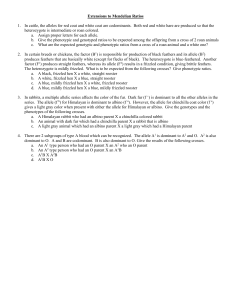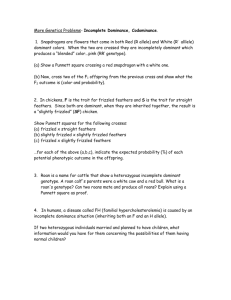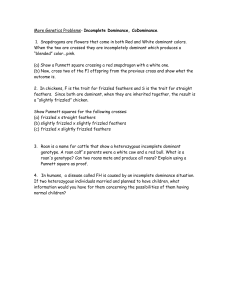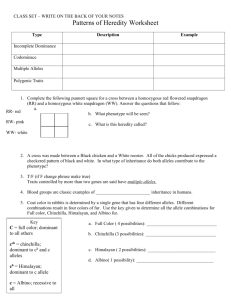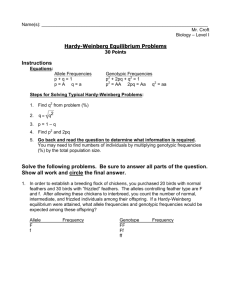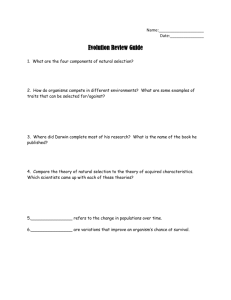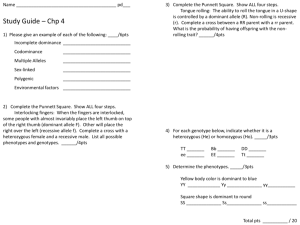Exceptions to Mendelian Ratios
advertisement
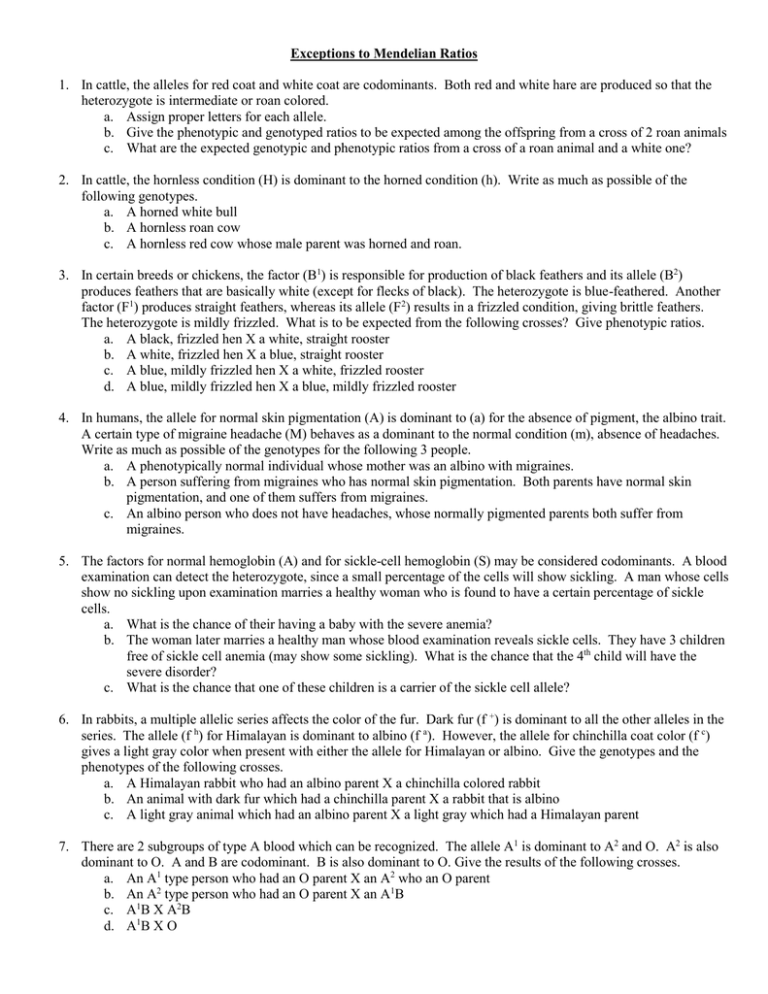
Exceptions to Mendelian Ratios 1. In cattle, the alleles for red coat and white coat are codominants. Both red and white hare are produced so that the heterozygote is intermediate or roan colored. a. Assign proper letters for each allele. b. Give the phenotypic and genotyped ratios to be expected among the offspring from a cross of 2 roan animals c. What are the expected genotypic and phenotypic ratios from a cross of a roan animal and a white one? 2. In cattle, the hornless condition (H) is dominant to the horned condition (h). Write as much as possible of the following genotypes. a. A horned white bull b. A hornless roan cow c. A hornless red cow whose male parent was horned and roan. 3. In certain breeds or chickens, the factor (B1) is responsible for production of black feathers and its allele (B2) produces feathers that are basically white (except for flecks of black). The heterozygote is blue-feathered. Another factor (F1) produces straight feathers, whereas its allele (F2) results in a frizzled condition, giving brittle feathers. The heterozygote is mildly frizzled. What is to be expected from the following crosses? Give phenotypic ratios. a. A black, frizzled hen X a white, straight rooster b. A white, frizzled hen X a blue, straight rooster c. A blue, mildly frizzled hen X a white, frizzled rooster d. A blue, mildly frizzled hen X a blue, mildly frizzled rooster 4. In humans, the allele for normal skin pigmentation (A) is dominant to (a) for the absence of pigment, the albino trait. A certain type of migraine headache (M) behaves as a dominant to the normal condition (m), absence of headaches. Write as much as possible of the genotypes for the following 3 people. a. A phenotypically normal individual whose mother was an albino with migraines. b. A person suffering from migraines who has normal skin pigmentation. Both parents have normal skin pigmentation, and one of them suffers from migraines. c. An albino person who does not have headaches, whose normally pigmented parents both suffer from migraines. 5. The factors for normal hemoglobin (A) and for sickle-cell hemoglobin (S) may be considered codominants. A blood examination can detect the heterozygote, since a small percentage of the cells will show sickling. A man whose cells show no sickling upon examination marries a healthy woman who is found to have a certain percentage of sickle cells. a. What is the chance of their having a baby with the severe anemia? b. The woman later marries a healthy man whose blood examination reveals sickle cells. They have 3 children free of sickle cell anemia (may show some sickling). What is the chance that the 4th child will have the severe disorder? c. What is the chance that one of these children is a carrier of the sickle cell allele? 6. In rabbits, a multiple allelic series affects the color of the fur. Dark fur (f +) is dominant to all the other alleles in the series. The allele (f h) for Himalayan is dominant to albino (f a). However, the allele for chinchilla coat color (f c) gives a light gray color when present with either the allele for Himalayan or albino. Give the genotypes and the phenotypes of the following crosses. a. A Himalayan rabbit who had an albino parent X a chinchilla colored rabbit b. An animal with dark fur which had a chinchilla parent X a rabbit that is albino c. A light gray animal which had an albino parent X a light gray which had a Himalayan parent 7. There are 2 subgroups of type A blood which can be recognized. The allele A1 is dominant to A2 and O. A2 is also dominant to O. A and B are codominant. B is also dominant to O. Give the results of the following crosses. a. An A1 type person who had an O parent X an A2 who an O parent b. An A2 type person who had an O parent X an A1B c. A1B X A2B d. A1B X O
